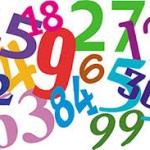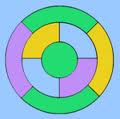
“Solitary trees, if they grow at all, grow strong” – Winston Churchill
You awake one day to find you’ve been shipwrecked on an island – The Island of Wishy Washy. The Island of Wishy-Washy had three types of natives. The Wishy, the Washy and the Wishy-Washy. Only natives could tell each of them apart. The Wishy always tell the truth and the Washy always lie. The Wishy-Washy sometimes tell the truth and sometimes lie. It all depended what they heard immediately before. If what they heard immediately before was the truth, then they would lie. If what they heard immediately before was a lie, then they would tell the truth.
So, if a Wishy answered immediately before a Wishy-Washy, then the Wishy-Washy would lie because a Wishy always tells the truth. If a Washy answered immediately before a Wishy-Washy, then the Wishy-Washy would tell the truth because a Washy always lies. If you don’t know what the statement was before a Wishy-Washy speaks, it could be either a true or false, depending on what the Wishy-Washy heard last (not you).
A curious fact about the natives of the Island of Wishy-Washy is that they never are seen with one of their own kind. That is, a Wishy is never with another Wishy. If a Wishy is walking with another native it is most certainly either a Washy or a Wishy-Washy.
Puzzle 1 – After awaking and realizing you’re on the Island of Wishy-Washy, you are immediately approached by three natives
- – the first says, “Hi, I’m a Wishy”
- – the second says, “Hi, I’m a Washy”
- – the third says “Hi, I’m a Wishy-Washy”
Can you determine which is which?
Puzzle 2 – The next day, you’re taking a walk on the beach, and again three natives approach. This time, you ask “Are you a Wishy-Washy?” to all three.
- – the first replies, “Yes, I’m a Wishy-Washy.”
- – immediately the second points to the first and says, “That’s a lie!”
- – to this, the third points to the second and says “No, that’s a lie!”
Can you determine which is which?
Puzzle 3 – The next day just two natives approach you. The first says, “I’m a Wishy-Washy” and the second says the same. Can you tell what they really are and which is which?
The Island of Wishy-Washy is an original logic puzzle. There are many further, more challenging puzzles concerning the Island of Wishy-Washy that will be introduced throughout the next year. Please enter a comment with any solutions in order share with others. Best of luck with solving these puzzles.
This puzzle is a reprinted puzzle from my original BLOG (on Facebook). I will be introducing new and more Wishy-Washy puzzles in the future.



